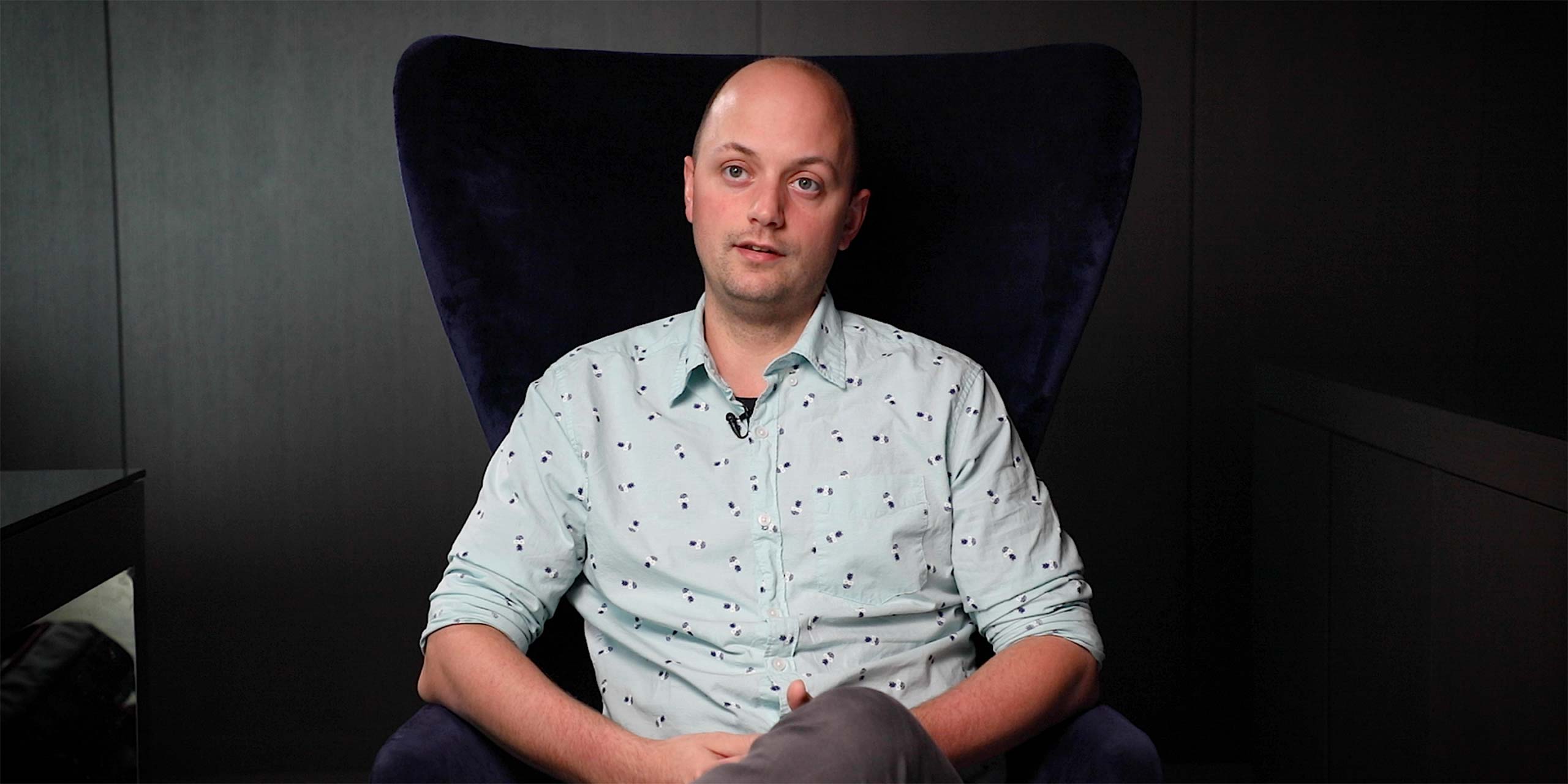John Redden is a professor perfectly suited to leading small classrooms. In conversation, he exhibits a combination of soft-spokenness and confidence that makes him appear wiser than his years. He has the kind of presence that lowers the anxiety level in any room, puts students at ease and gives them the freedom to think, speak, discuss and learn from one another.
Unfortunately for Redden, he doesn’t teach small classrooms. As an associate professor with the University of Connecticut’s department of physiology and neurobiology, Redden teaches undergraduate anatomy and physiology in course sections of more than 500 students. It’s far from ideal for a teacher of his personality, but he’s more concerned with the fact that it’s not the best arrangement for student learning, no matter who’s teaching.
“Something happens to students when they sit in their chairs inside the classroom where they just expect to have this passive experience with someone talking to them,” Redden says . He’s quick to point out that faculty are creatures of habit too. “Most of us get in the habit of teaching similarly from semester to semester, and there’s comfort in that.”
Redden, who doubles as the assistant director of faculty development programs at UConn’s Center for Excellence in Teaching and Learning, says faculty and students need to step out of that comfort zone together—and right now, that means putting active learning into practice in the classroom. “The biggest argument you hear from faculty is that, ‘I’m good at lecturing, students like my lecturing, why should I change something that’s been working? If it ain’t broke don’t fix it.’ And what I would say back to them is that, ‘that might be working for you, it might be working for some of the students, but the research would show that it’s not working for everybody in the classroom.’”
Making stronger connections
College classrooms are increasingly the locus of research on teaching techniques, and the results back Redden’s claim. One 2014 meta-analysis of 225 studies of active learning in the STEM disciplines, published in the Proceedings from the National Academy of Sciences, found that student performance on examinations and concept inventories rose by 0.47 standard deviations, and that students taught using traditional lecture techniques were 1.5 times more likely to fail their course than those who were taught using active learning.
Redden points out that active learning has other benefits as well. It helps foster a stronger sense of connection between students and their major. It’s more inclusive, a means of reaching students of color and first-generation students. “Ultimately, our job is to do as much as we can for as many students as possible,” says Redden, “and active learning is a way to do that.”
All of which explains why Redden is constantly looking for ways to make his own large classrooms feel small. “I’ve found that just by having them stand up and move around, automatically they’re more engaged.”
Where does he move them to? The aisles, the whiteboards, anywhere they can stand face to face, or in small groups, to discuss the material. “We can use the walls, we can hang poster board on the walls, we can hang Post-Its on the walls and really take advantage of the physical space that we have.”
The Post-Its and flipcharts are just one small part of Redden’s ongoing effort to upend his classrooms with active learning techniques. He began by using a classroom-response system to get students answering questions on-the-spot, then added disease-based case studies to make sure students always have an answer to the question, ‘Why are we learning this?’
But his favorite active learning technique, by far, is what he calls The Jigsaw. “You have the whole class break up into smaller groups, and each group works on a specific problem for a period of time,” he explains. “Then they break apart and go to the other groups and share their problem and their solution, which basically turns the students into teachers.”
Ultimately, our job is to do as much as we can for as many students as possible, and active learning is a way to do that.
And he tries, as much as he can, to get as many students as possible speaking up. When students are working in breakout sessions and one group arrives at the correct answer, he’ll ask them to share their answer with the class, because the process of explaining concepts aloud helps cement them in the minds of the explainers. “A lot of students don’t like to hear their own voices in a class that large, so by doing it that way it kind of creates a safe space for students sharing their own ideas because they know ahead of time if they have the right answer.”
Redden says he’s had to learn to operate new technologies and to become adept at applying a variety of new classroom tactics. But the biggest change has been in the way he conceives of his own role as the expert in the room. “One of the biggest adjustments that I’ve had to make since adopting active learning was the idea that I’m actually not an encyclopedia,” he says. “I don’t think of myself any longer as being the sole information provider.
To hear him tell it, active learning—once you get the hang of it—is a far less stressful or pressure-packed way to teach. “If they want an encyclopedia, we have a textbook for that. We have the internet for that. My job is to lead them through the information, to identify the things that are most important, to help them to understand the things that might be the most confusing, or the things with a lot of conflicting information in those sources.”


